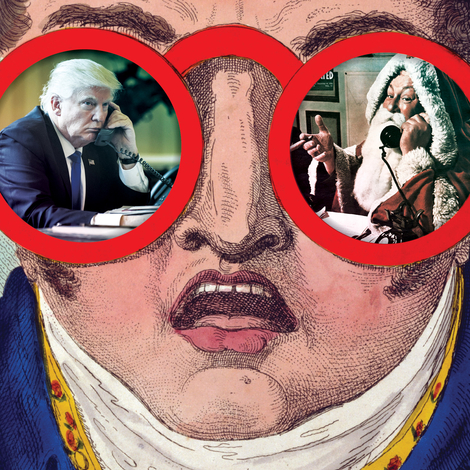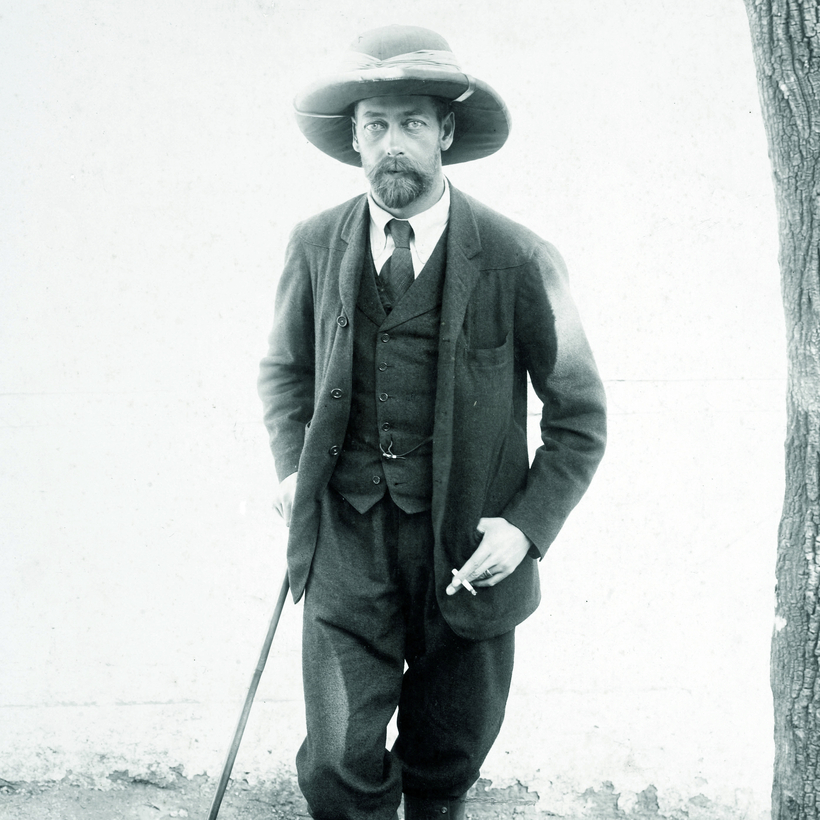Exactly what went on behind that beard? There have been few monarchs quite as discreet and inscrutable as George V, whose nicotine-stained facial hair was just the first of many layers he hid behind, along with his thick Victorian frock coat and his all-consuming, conversation-avoiding addiction to shooting and stamp collecting.
His diaries, which he wrote up every night of his life in schoolboy handwriting, are charmingly, infuriatingly non-committal, giving no evidence of an inner life. “He recorded the time he got up, the time he ate breakfast and the time he went to bed (usually 11.10),” Jane Ridley writes in the preface to her biography, which succeeds, against all the odds, in being superbly un-dull.
Characteristic diary entry: “I have got to go to London I regret to say, on account of the political crisis & shall lose my day’s shooting at Six Mile Bottom.” Whenever any political crisis happens, George has to be dragged away from some shoot, or “massacre”, as Ridley sometimes calls them. He was reckoned to be the sixth best shot in the world. “We were only 8 guns and got 2,207 head before luncheon.” He arrived at meetings with his hand trembling from so much trigger-pulling.
George — born in 1865, king from 1910 to 1936 — was at heart a country squire. Poorly educated with his elder brother Eddy by their affectionate but ineffectual tutor the Rev John Dalton, George learned no history and hardly any French or German. The boys were sent to sea aged 12 and 13 for naval training in the brutal regime of the Britannia training ship — a regime that validated George’s innate need for neatness, punctuality and order.
Ever after, he liked things to be ship-shape. When in 1905 he had all his sons circumcised, as was the fashion among the virility-minded upper classes, he wrote in his diary: “I always knew it was necessary and now all the boys have no ‘tops’ and look alike.”
Deep into adulthood he spelt “prerogative” wrong (“perrogative”), and his aesthetic tastes remained un-honed. Ridley gives two memorable examples of his cultural hinterland, or lack of one, on top of mentioning his well known predilection for furniture from the Tottenham Court Road shop Maples.
At an art gallery he was heard to say to his wife: “Mary – here’s something to make you laugh.” It was a Cézanne. Another time, Prime Minister Asquith’s private secretary rang the Palace to say it was Thomas Hardy’s 70th birthday and he might appreciate a telegram. “The royal congratulations were sent to a bemused Hardy of Alnwick, the maker of the King’s fishing rods.”
At an art gallery King George was heard to say to his wife: “Mary – here’s something to make you laugh.” It was a Cézanne.
The book’s subtitle is a quote from Alan (Tommy) Lascelles: “He was dull, beyond dispute, but my God, his reign (politically and internationally) never had a dull moment.” Poor man — he would much have preferred a nice peaceful reign, or not to have reigned at all. It was because Eddy died of pneumonia aged 28 in 1892 that he became first in line. A footnote tells us that he liked to reflect that he and Henry VIII were the only two men who had been Duke of York, Prince of Wales and King.
There certainly were dull moments for those stuck having dinner with him and Queen Mary in white tie and tiara on a weekday evening, especially when George became a teetotaler during the First World War to set an example to his subjects, which hardly any of them followed. “Awful balls, the whole thing,” complained their eldest son, David, the future Edward VIII, behind their backs. The only element of jollity at breakfast was the King’s parrot, Charlotte, pecking her beak into the strictly portion-controlled soft-boiled eggs.
There’s much to enjoy here about George’s nerdy, hypochondriacal and rather humorless character. Yet, as Ridley portrays with great fairness, he somehow managed to be a king loved and revered by the people. After his initial mistake, in the first year of his reign, of reluctantly agreeing to Asquith’s duplicitous request that he give a guarantee to create 100 Liberal peers to push through the government’s legislation, he never again allowed himself to be played around with by politicians. He took the reins of his reign and became a mediator, facilitator and bringer-together, quietly exerting his will for peace and agreement without ever having to use his royal “perrogative”.
In his own dress, his disdain for anyone who didn’t dress correctly (“Cads!”) and his refusal to allow divorcées into Buckingham Palace, he was, as Ridley puts it, “fighting a one-man war against the 20th century”. Wallis Simpson would later epitomize all he loathed about the modern world: “A divorced American with painted nails and plucked eyebrows, living in a flat.”
He would much have preferred a nice peaceful reign, or not to have reigned at all.
After the Russian Revolution, he and his circle were terrified, more than anything, of the rise of Bolshevism. George ruthlessly withdrew his offer of asylum to his cousin “Dear Nicky” Romanov as soon as he realized that the czar’s arrival might cause a revolution in Britain. (That refusal, initially hushed up, was revealed by Kenneth Rose in his 1983 biography. Ridley generously quotes and acknowledges previous biographers.)
Yet it was George V who, suppressing his inner Tory, ushered in and facilitated the first Labour government under Ramsay MacDonald. The two of them got on well. It was a stroke of genius of George’s to start going to FA Cup matches after the First World War. It was at these he realized that the British public were not Bolshevists, just good solid working people who needed to feed their families. During the General Strike, Lord Durham called the strikers a “damned lot of revolutionaries”. “Try living on their wages before you judge them,” retorted the King.
“You have found me an ordinary man?” he asked MacDonald years later, after he’d asked him to stay on as prime minister three times. That was what he hoped, and it was his very ordinariness, Ridley suggests, that made the monarchy so central to the nation’s life.
Wallis Simpson would later epitomize all he loathed about the modern world: “A divorced American with painted nails and plucked eyebrows, living in a flat.”
There’s so much to say about George that I’ve hardly mentioned Queen Mary yet. That must be amended because Mary comprises about 40 percent of this book. Whenever George is being boring, which is quite often, Ridley switches over to Mary (or May, as she calls her) rather as one might switch radio stations. Hooray – there she is in Bond Street with her statuesque figure and splendid bosom, visiting antique shops, china shops and jewelers, and getting her lady-in-waiting to go in and beat down the price.
She was obsessed with collecting dynastic jewelry and a bit covetous about other people’s possessions. When leaving houses, she would say: “I really must go and say goodbye to that charming little table.” But she was not, Ridley stresses, the rapacious “kleptomaniac queen” she has been accused of being.
The royal marriage, considering that it was arranged and that May had been about to marry Eddy, was an astonishing success. Their early love letters, known as the “Tootsums letters” after their term of endearment, were “not erotic”. When one considers George’s carapace, and May’s “carapace of icy self-control” that she had developed through a childhood of her father the Duke of Teck hurling china at her mother during his tantrums, it seems amazing that they conceived six children, but they did, and slept in the same bed all their lives.
“I thank God every day that he should have brought us together,” George wrote to May, “especially under the tragic circumstances of Eddy’s death & people only said I married you out of pity or sympathy. That shows how little the world knows what it is talking about.”
They were terrible parents, though. May never stood up to her husband when he was shouting his head off at his sons for not living up to his high standards of moral rectitude. The fact that he was “one of the kindest people in the world, but a brute to his children” just shows how complex the human character is. The First World War chapter ends with the death of their epileptic son John in January 1919. Yes, they loved him, but they hardly ever visited him at his secluded farm — just dropped in twice a year.
Ridley has a wonderful ability to push the story along, luring us with salient details, even making one “fairy-tale of stamp-collecting” riveting. Her account of the King’s death, secretly brought on late on the evening of January 20, 1936, by his doctor, Dawson, with a large dose of morphia and cocaine, so that it would appear in the next morning’s Times rather than the evening paper, is chilling. Never a dull paragraph.

Ysenda Maxtone Graham is a critic for The Times of London and the author of five books

